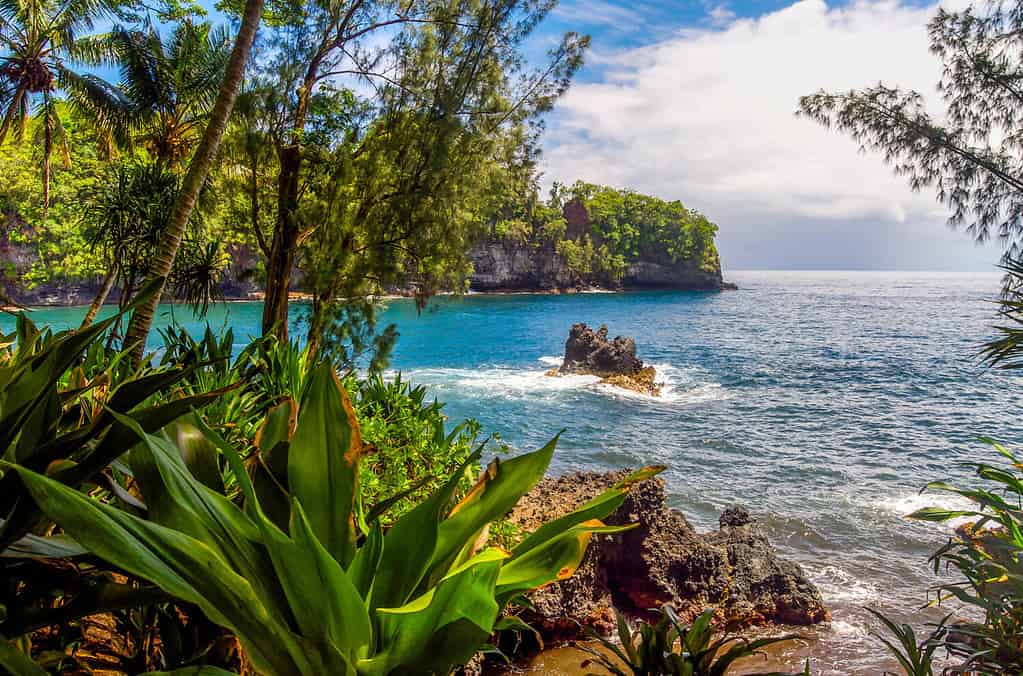Hawaii is a gorgeous state in the Western U.S. About 2,000 miles from the country’s mainland, Hawaii is located in the Pacific Ocean and consists of eight islands, with the main ones being Oahu, Maui, Kauai, and the Big Island. The state is known for its tropical climate with warm temperatures and humidity. But just how hot can Hawaii get? Learn about the state’s hottest temperature ever recorded — including where and when it happened, as well as when it could happen again.
Hawaii’s Average Temperatures
Hawaii has a mild tropical climate with moderate humidity. Weather-wise, Hawaii essentially has two seasons: summer and winter. “Summer” (kau) takes place between May and October, while “winter” (ho‘oilo) is between October and April.
During “summer” months, the average high temperature is 85 degrees Fahrenheit. Trade winds also tend to be more prevalent during “summer.” Throughout Hawaii’s “winter” months, the average high temperature tends to be cooler at 78 degrees Fahrenheit. Additionally, “winter” is Hawaii’s rainy season.

Hawaii is about 2,400 miles from the Mainland U.S.
©MH Anderson Photography/Shutterstock.com
The Hottest Temperature Ever Recorded in Hawaii
Hawaii’s hottest documented temperature was 100 degrees Fahrenheit on April 27, 1931, in Pahala (elevation 870 feet). Pahala is located on the Big Island and is the northernmost town in the Ka’u district. It was once home to Hawaii’s large sugar cane plantation before it closed in 1996 due to low demand.
Even though Pahala is relatively small (410 acres with a population of 2,023 as of 2020), it’s the largest town in Ka’u. It also happens to be warmer than its surrounding towns, especially during the summer months.
When Could Hawaii Break Its Hottest Recorded Temperature?
According to recent research, El Niño is back, bringing extreme weather and surging temperatures. This occurs when Pacific Ocean waters become warmer than usual. Over the last three years, the Pacific Ocean has been cooling, but El Niño now has a 90% chance of continuing its moderate progression until the end of 2023. This, mixed with rising temperatures from climate change, means Hawaii might be breaking its hottest recorded temperature as soon as 2023 or 2024.
Other research by the University of Hawaii found that climatic changes will be common across Hawaii by the 2030s. This will greatly impact the state’s wildlife and cause more severe storms and flooding, eventually leading to rising seas and fully-submerged roads. Additionally, the freshwater supply in the mountains is at risk, the coral reefs are dying from heated ocean waters and bleaching, and endangered species are more likely to go extinct. The planet as a whole is projected to warm more than 34.7 degrees Fahrenheit above pre-industrial levels by 2040.

El Niño occurs when trade winds weaken, and warm water is pushed toward the Pacific Ocean on the West Coast of the U.S.
©Fred the Oyster / public domain – License
Risks of Hawaiian Heatwaves
Hawaiian heatwaves, especially marine ones, can devastate the coral reefs, worsen coastal erosion, and harm Hawaii fish and other marine life. One of the most concerning issues is coral bleaching, which was once unheard of and now happening globally. This occurs when coral polyps expel the zooxanthellae (or algae). The coral turns white without its main source of food, thus becoming more susceptible to disease. The coral reef is extremely important, as it protects coastlines from storms and erosion and provides food and shelter to many fish and marine species.
In addition to its impact on marine life, Hawaiian heat also poses a threat to its people. Heat-related illnesses can cause extreme illness and even death. Due to its proximity to the equator and high humidity, individuals are at high risk of concerning health conditions in Hawaii’s hot temperatures.
Animals That Thrive in Hawaiian Heat
Many different wildlife species (an estimated 21,000 or more) thrive in Hawaii’s tropical climate and diverse terrain. Hawaii is known for its rainforests, oceans, and mountains, boasting of various animals and sea creatures.
Hawaii’s state animals include:
- State bird: Nene (Branta sandvicensis), also known as the Hawaiian Goose
- State fish: Humuhumunukunukuapua`a (Rhinecanthus rectangulus)
- State mammal: Hawaiian monk seal (Neomonachus schauinslandi)
- State aquatic mammal: Humpback whale (Megaptera novaeangliae)

Nene, also called the Hawaiian Goose, is considered an endangered species.
©Wunson/Shutterstock.com
In addition to its state animals, Hawaii is also home to many marine species like manta rays, sharks, dolphins, and sea turtles. Hawaiian rainforests also feature chameleons, the hoary bat, and mongoose.
Hawaii has many endangered animals as well, including:
- Nene goose
- Oahu tree snails
- Hawaiian monk seals
- Hawaiian hoary bats
- Sea turtles
- Crested honeycreepers
- Hawaiian moorhens
- Hawaiian hawks
For a complete list of animals in the tropical state, check out our Hawaii wildlife guide.
The photo featured at the top of this post is © MGambill/Shutterstock.com
Thank you for reading! Have some feedback for us? Contact the AZ Animals editorial team.






